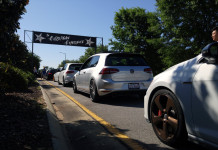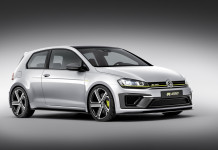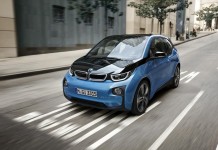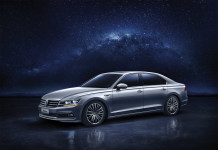Prof. Dr. Martin Winterkorn, Chairman of the Board of Management of Volkswagen AG, today reinforced the importance of the electric mobility research and initiatives taking place at Volkswagen’s Electronic Research Laboratory (ERL) in Silicon Valley. During an afternoon tour at ERL, Volkswagen’s largest research facility outside of the company’s headquarters in Wolfsburg, Germany, Winterkorn noted that the facility is a key component of Volkswagen’s efforts to become the global leader in electric mobility by 2018.
“In the future, the heart of Volkswagen will also beat with electricity, and our engineers in America, Europe and Asia are laying the foundations for that in the research alliance,” Winterkorn said. “Volkswagen will be the automaker that will offer the electric car attainable for every customer.”
Volkswagen invests more than $6.45 billion (5 billion Euros) annually in research and development, and has more than 23,000 employees worldwide focused on these initiatives, Winterkorn said.
The investment required for development, especially in the field of e-mobility, is based on sound economic grounds, according to Winterkorn. The operational result in the first five months of the ongoing year has developed better than expected; the same is true for the Group’s vehicle sales.
Deliveries in the first half of 2010 increased to more than 3.5 million vehicles (first half of 2009: 3.1 million), an increase of around 15 percent. Winterkorn said that the Volkswagen brand has plainly exceeded the 2-million threshold in terms of deliveries in the same time period, increasing the value of the previous year (1.9 million vehicles) likewise by around 15 percent.
Winterkorn noted that the Group Research division at the company’s headquarters in Wolfsburg is responsible for innovation across all of the Volkswagen’s brands. Research assignments and results are coordinated there.
At ERL, more than 100 engineers and scientists are working on the cars of tomorrow. In addition to electric mobility, the ERL team is working on driver assistance systems, online navigation and social networking/ geo-tagged information, among other things. In addition to the Palo Alto facility, the Group Research division includes the Volkswagen Research Lab China (VRC) and Technical Representative Tokyo (VTT).
“Volkswagen is bundling research and advance development activities for electric cars worldwide,” Winterkorn said. “In terms of research, e-mobility is a key function for the automobile of tomorrow.”
What’s decisive for Volkswagen is the close, worldwide cooperation and networking of the expert groups, Winterkorn said. Thus, building prototypes and the joint assessment of performance and specification in automobiles takes place across the research alliance.
Within this global alliance for research and advanced development, Volkswagen is examining various energy storage concepts, according to Winterkorn. In the field of lithium-ion technology (li-ion), for example, this means competition between specially developed battery cells and so-called consumer cells known from notebooks and other devices.
Winterkorn said that some of the research at ERL is focused on the battery compound for automotive battery cells. These cells, as well as intelligent controls (power electronics) of the stored energy, help ensure that vehicle cruising ranges are as wide as possible and that reliability and safety issues are managed and maintained.
Winterkorn concluded his remarks by laying out the company’s e-mobility roadmap for vehicle introductions into the United States. The Touareg Hybrid will be launched later this year, followed by the Jetta Hybrid in 2012. In 2013, either the E-Up! or the Golf blue-e-motion will be Volkswagen’s first full-electric vehicle in the United States.
“Our path to global leadership also leads through the United States, because we have considerable growth opportunities here,” Winterkorn said. “Our goal is to turn Volkswagen into the leading volume brand here as well.”







